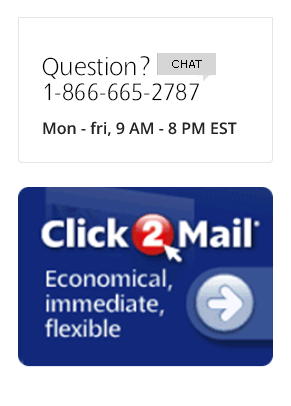In this New Year we’re updating our Why Mail This Month series. Instead of providing date-specific mailing tips and stories each month, we’re going to share more general mailing best practices that are specific to time of year. Rest assured, you can still get a free copy of the When to Mail whitepaper, as well as an updated.
Many people kick off the New Year with a couple verses of Auld Lang Syne or a champagne toast. Smart marketers kick off the New Year with a new marketing plan. If that’s you, here are 5 trends to consider as you revamp your marketing plan for 2015.
1. Less free social. Ten years ago marketers rushed to social for its allure of “free” advertising to broad audiences. But in 2015 and beyond, there will be what Damian Damjanovski of Common Ventures dubs “less free social.” Organic reach per fan on Facebook, according to EdgeRank Checker, fell from 16% in February 2012 to 6.51% in March 2014.
That’s not to say that marketers should abandon social media marketing, but it can’t be the end-all of a successful marketing campaign. Social is but one leg of the multi-legged stool. Which brings us to #2…
2. Integrate, integrate, integrate. We’ve talked a lot about integrating direct mail marketing with other types of marketing – check out our Small Business Guide to Integrating Direct Mail with Other Marketing Channels. Multi-channel integrated marketing isn’t a new trend, but in 2015 it shifts from a nice-to-have to an imperative. That’s in part because research consistently demonstrates how much more effective integrated campaigns are than single-channel campaigns.
And they don’t have to be difficult to execute. For example, Joey, the marketing manager for a two-location children’s store had planned a marketing campaign to promote the store’s new line of all natural wood product toys. Joey initially planned to do only direct mail marketing since that had worked so well in the past. But in the spirit of the New Year, he decided to add in social media marketing, email, and local print marketing as well. Since he already had the foundational concepts down, it was just a matter of tailoring those concepts for each of the channels. In the end, Joey found he was able to reach a wider audience and generate a far larger response with an integrated approach than just with direct mail.
3. Target + personalize. “It’s only junk if it’s not relevant to you,” Belinda Neal, a partner at London-based direct marketing agency 21:12 explained in a BBC article. In other words, people want to receive marketing materials as long as those materials are relevant to them. Relevancy is about both the mail piece itself (personalization) and to whom it is sent (targeting).
These days we can do a lot of personalization fairly easily. Beyond the standard personalization like adding the recipient’s name, you can also data like the product the person last purchased – and how that’s relevant to the offer you’re now sending. More subtly, you can include images that are specific to that person’s stated preferences.
Relevancy is also about targeting. Have you used mailing list data to ensure that you’re only mailing to people who are actually good prospects for your product or service? Have you created the mail piece – from the offer to the call to action to the headline to the graphics – tailored specifically to the traits the mailing list reveals?
4. Mail smarter. Targeting and personalizing your mail pieces are two aspects of smart mailing. But smart mailing goes beyond targeting and personalization. Marketers spend hundreds of millions of dollars a year on research into why people behave the way they do. But ultimately, anyone can mail smarter by testing and measuring with their audience. A/B split testing is an easy tool that any marketer can implement, and it has yielded valuable insights over the years.
“In direct mail,” said marketing great David Ogilvy, “testing is the name of the game.” To perform an A/B split test, create two versions of your mailer that are the same in every way except for one element (it could be the headline, or the offer, or the call to action, or the color of the background, or any other element). Randomly split your list in two and mail one version of the mailer to one half and the other version to the other half. Whichever version pulls the best response, that element wins – you should use it on all of your subsequent mailings. If you want, you can keep running split tests to perfect other elements of your mailer.
5. Go hyperlocal. In the same spirit as targeting and personalization, hyperlocal marketing is an emerging trend in both online and offline marketing. In the context of direct mail marketing, a hyperlocal campaign might be mailing a customized mail piece targeted by zip code. In the context of online paid search advertising, as another example, a hyperlocal campaign might be serving up customized ads targeted by city. Both online and offline, hyperlocal marketing can be a great way to boost response rate which actually reducing marketing costs.
Why mail in January? Because mail works. And when you ring in the New Year with a new marketing plan, bearing in mind these five trends, it can work better than ever in the year to come. And if you need help? We’re just a click, call, or email away.





